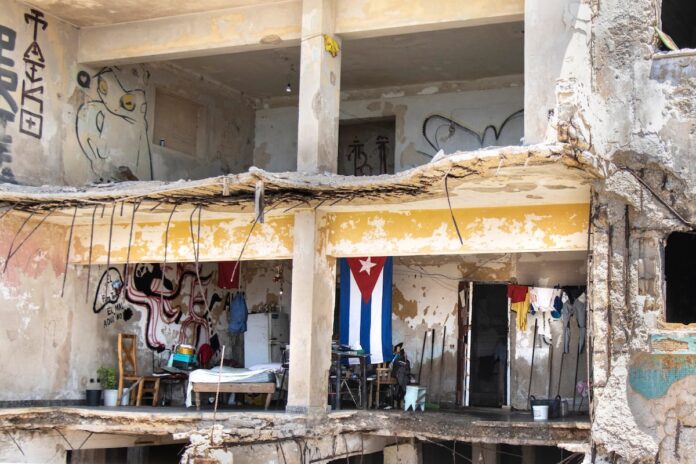The Cuba of mid-2025 is actually two Cubas: one can be described, for example, from the K Tower, an imposing 41-story, 508-foot-tall, 600-room luxury hotel that opened this year in Havana’s Vedado neighborhood. It’s managed by the Spanish company Iberostar and owned by the Cuban military’s business conglomerate GAESA.
From the observation deck on the skyscraper’s 32nd floor terrace — which features a huge restaurant and pool that were both empty on a late-July afternoon — one can see the beauty of a city where time seems to stand still: the legendary Yara cinema, the Coppelia ice cream parlor, the Habana Libre and Nacional hotels. And, in the background — amidst the historic downtown, filled with crumbling buildings — the National Capitol building and the immense Caribbean Sea.
Drinks at the hotel can only be paid for in U.S. dollars. And unlike the rest of the island — accustomed to living with blackouts — the power and air conditioning don’t go out. This is a reality that only a few tourists and the growing but still-tiny Cuban oligarchy can afford. For many citizens who cross paths every day with this building, it’s like a mirage. The state has invested $200 million into the project, at a time when tourism is declining and the country is experiencing its worst economic crisis since the Special Period (the late-1980s and early-1990s, after the fall of the USSR and the loss of its economic subsidies).
The K Tower has drawn the scorn of those who live in the other Cuba: those who live on the street, dealing with daily power outages and struggling to make ends meet. Their salaries don’t cover basic needs. All they can do is watch inequality grow.
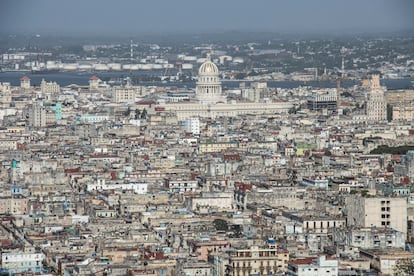
In Havana, the number of street beggars has multiplied in recent years. Moreover, since the fuel crisis began in 2019, rubbish has piled up, because the garbage trucks no longer run regularly. Old Soviet Ladas and American cars from the 1950s — patched together with spare parts — now coexist with the latest models.
And, every day, a Cuban citizen — who earns an average monthly salary of 6,500 pesos (just over $16) — passes by the numerous MSMEs (micro, small and medium-sized enterprises). In these shops, a carton of eggs, for example, is sold for around 3,000 pesos ($7.50). It’s as if capitalism has suddenly landed on the communist island to show ordinary Cubans — those who don’t have access to foreign currency — everything they can’t afford.
A decade has passed since the announcement of the failed thaw between Cuba and the United States, which Raúl Castro and Barack Obama sealed with a handshake. There seems to be no trace left of the hope of that era, when Cubans dreamed of change and independent media outlets flourished. Today, President Miguel Díaz-Canel leads the Communist Party, ruling the island under the banner of continuity. An increasingly unequal and non-transparent economic reality has taken hold, with critical voices and dissenters being punished with imprisonment or exile.
According to the NGO Prisoners Defenders, as of July of this year, there were 1,176 political prisoners in Cuban jails. Meanwhile, dozens of artists and intellectuals have been forced to leave the island to avoid imprisonment — another method that the government uses to silence opposition.
“I dream of it falling,” a young man sighs, pointing to the K Tower, while waiting in the line that forms every day to enter Coppelia, the ice cream shop that generations of Cubans have visited to cool off, fall in love and satisfy their cravings. It was founded in 1966 on the corner of L and 23rd Street, at the initiative of Fidel Castro. He wanted Cuba to have more ice cream flavors than the United States (the original menu offered 26). And, although most of the flavors have disappeared from the menu due to successive economic crises, Havana residents can still enjoy a “salad” — as they call it — with five scoops, cookies and syrup for 155 Cuban pesos (less than 50 cents).
“The ice cream used to be better, creamier. Now, you can’t choose as many flavors… and there’s no chocolate flavor, which used to be the best,” Mireya admits. She’s a nurse from Arroyo Naranjo, a municipality in Havana province. After finishing her shift at a hospice, she caught a movie at the Yara cinema and stopped by Coppelia to eat some ice cream. Meanwhile, some young people jokingly ask the waitress if the ice cream contains baking soda. “Go to the factory and complain!” she replies angrily, seemingly tired of the wisecracks from customers who remember better times.
In a country where there are no democratic elections, millions have been voting with their feet in recent years: the island has suffered the largest exodus since the beginning of the Cuban Revolution, with an estimated 2.5 million people lost since 2022. And, for the just over 8.5 million Cubans who remain, the level of exhaustion is evident in almost any conversation, with reactions ranging from humor, to resignation, to anger.
The heavy-handed sentences imposed on those arrested on July 11, 2021 — during the largest popular mobilizations since 1959 — managed to silence protests of the magnitude that were seen that year. There have been a few exceptions, such as the Santiago de Cuba demonstrations in 2024, or protests against the dollarization of internet service. But you only need to speak to Cubans to understand their weariness with the situation on the island. The state – thoroughly discredited – has sought to control everything for more than six decades.
20-hour-long power outages
The town of Camilo Cienfuegos — in the municipality of Santa Cruz del Norte, in the province of Mayabeque — is about 35 miles from Havana. During the sugar boom, the town was called Central Hershey and had one of the island’s main sugar refineries. Today, however, residents organize their schedules based on when the power comes on.
“Here, they cut off the power for 20 hours, 18, 12… whatever they want. They’re hitting us really hard: what we have is a chaos. If the power comes on, you have to wash, you have to cook, you have to clean. And the refrigerators don’t even freeze things anymore,” Betty laments, while giving her friend Isis a manicure. “If, for example, the power comes on at midnight,” she continues, “you have to get up and get everything done, so that — when it goes out again — you’ll have everything done and you can wake up without stress.”
“That’s what we call adapting to the system, you understand? I get up at 3:00, 4:00 a.m…. whatever time they set, I jump out of bed,” Isis chimes in. Like many Cuban families, these women have turned to cooking with charcoal or firewood because, with the blackouts, the electric stove is no longer useful. In Betty’s case, her mother has planted corn and sweet potatoes in the yard, so as to ensure the family’s food security. Faced with rising food prices in private businesses and the shortage of what state-owned stores provide to those holding ration books, this is an option many Cubans have turned to in order to survive.
A few blocks from where the two women are chatting, two retirees — 78-year-old Gisela Masón and her husband Pedro, 82 — say they’re getting by thanks to the remittances their son sends them from Panama. This money helps them meet their basic needs and purchase their prescription medicine, which the Cuban healthcare system — which is also severely deteriorating and suffering from shortages — has been lacking for some time.
Gisela and Pedro have also sold their two cars and some household items. And they’ve planted several fruit trees and vegetables in their garden, to bolster their diet.
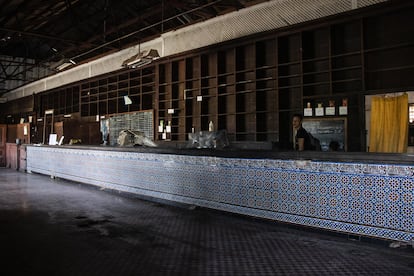
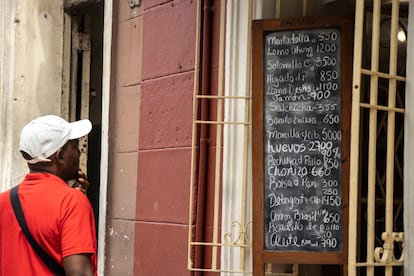
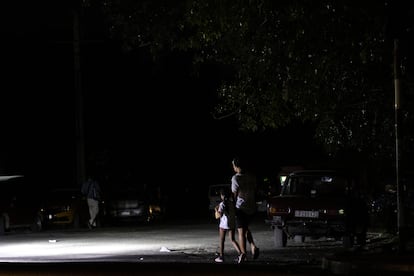
Masón used to work in economic planning at the municipality’s sugar mill. It was closed in 2003 by government decree, due to falling commodity prices. The closure of dozens of mills around that time dealt the final blow to sugar production. Cuba went from being one of the world’s leading exporters to having to import sugar from other countries, as is the case with many other foodstuffs.
This is one of the biggest problems facing the economy, as President Díaz-Canel himself has acknowledged. “The import mentality has eroded us for years, in addition to generating dependency, the negative effects of which are most felt in times of crisis,” he stated, in a speech before the National Assembly this past July. “We urgently need to change the matrix and work on the basis of consuming more of what we produce domestically.”
This commitment is being felt by the growing private business sector, which has seen the government’s approach toward them shift slightly. The state went from blaming the more than 9,500 MSMEs — which have multiplied in recent years — for the high prices of basic goods, to suddenly investing in partnership with them to recover Cuban production. “The state sector used to see the private sector as a competitor, but with these experiences in cooperative production, it’s now seeing it as a potential ally,” Aldo Álvarez explains. He’s the owner of Mercatoria, a platform that sells imported products on the island. Currently, he’s preparing to produce coffee jointly with the state, in the province of Mayabeque.
This Havana native — who entered the Cuban private sector in 2015 — considers himself to be an “extreme entrepreneur.” He says that doing business on the island requires a lot of patience and the ability to adapt to constantly-changing scenarios. Currently, he notes, “more than half of the regular consumption of families in Cuba is being covered by the private sector.” However, there remains a strong unmet demand, since a large part of the population cannot afford to buy what the businesses offer.
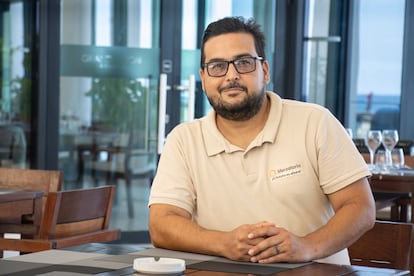
“Until the income of customers in that market increases, that flow won’t increase. It’s an unmet demand. But there are still opportunities,” the owner of Mercatoria maintains. And he rejects the government’s accusation that private businesses are causing inequality. “The private sector pays taxes, creates jobs, integrates into the country’s economy… it’s part of the solution. Without a private sector, today, we might have even more migration, more brain drain and more people living on the streets. To be able to distribute, you first need to have something to distribute. Distributing poverty won’t work for you. You have to create wealth.”
What remains of the revolution?
Back in Santa Cruz del Norte, the old buildings of the sugar factory where Gisela Masón used to work are reminders of the wealth that the island once enjoyed. Built by the Hershey Company during World War I — which also built a town with a school, theater, cinema, a hotel and gardens — the mills were transferred to a local businessman in 1958, before being nationalized after the revolution. Once the mill closed in the early-2000s, some facilities were converted into other industries — such as an agricultural center, or a tile factory — while others were abandoned.
Such is the case of the mill’s theater: a building surrounded by lush palm trees and flamboyant flowers, but completely dilapidated. Next to the stage, only one quote from revolutionary leader Camilo Cienfuegos remains intact: “This revolution will reach its intended goal. This revolution, as in the days of the war, has only two paths: conquer or die.”
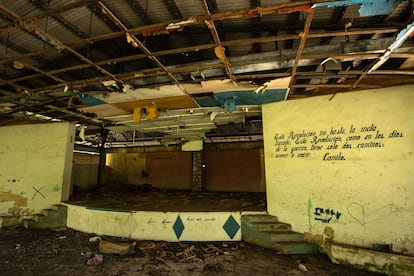
It’s been 66 years since the triumph of the Cuban Revolution and almost nine since the death of its historic leader, Fidel Castro. It’s also been four years since Díaz-Canel succeeded a nonagenarian Raúl Castro, who has practically disappeared from public life. Today, in Cuba, it’s increasingly difficult to find hope for the revolutionary dream.
“Young people only think about finishing their studies and leaving. Their fixed idea is to emigrate, wherever and however they can. This is a product of hopelessness and desperation,” says Raymar Aguado Hernández, a 24-year-old Humanities student and essayist. He says he belongs to a generation that grew up watching the country get increasingly worse. And, unlike his parents — who believed in the Cuban political system and became disillusioned in recent years — he grew up without any affinity for the country’s leaders.
“We grew up seeing a senile Fidel Castro, who was practically destroyed, old, who couldn’t maintain a coherent line of discourse without straying from the topic,” he sighs. Like many young people, Aguado saw the hopes of a thaw with the U.S. fade away. He also experienced the arrival of the internet and exchanges with the millions of tourists who arrived at the time. He then suffered the successive crises that hit the island starting in 2019, aggravated by the iron fist of Donald Trump’s presidency and the COVID-19 pandemic. And he witnessed the effervescence of the 2021 protests, in which thousands of Cubans took to the streets to express their discontent with food shortages and the lack of gasoline. These protests against hardship resulted in hundreds of arrests, mostly of young people, who were sentenced to long prison terms.
Despite the repression, Aguado is convinced that Cubans must continue to insist on creating “social and cultural change.” And he’s hopeful about the precedents set in the creation of civic ties, such as the recent university protests against rising internet rates, which — while unsuccessful — mobilized sectors of the public university system that are traditionally aligned with the government. “This student autonomy challenging government policy was unprecedented since the beginning of the revolution,” says Aguado.
This summer hasn’t been an easy one for Díaz-Canel. Adding to popular discontent over surging internet rates, blackouts and the rising cost of living, he was forced to take a step back last month when he announced the resignation of Marta Elena Feitó Cabrera — his minister of Labor and Social Security — following controversial statements in which she asserted that there were no beggars in Cuba, but rather people disguised as such.
Panhandling is an undeniable reality for Cubans, who — on a daily basis — encounter people begging or rummaging through the trash. The president and his prime minister — Manuel Marrero — publicly disagreed with the official and acknowledged the “vulnerable” situation faced by part of the population, as well as the growing inequality.
Aguado, however, doesn’t quite believe the resignation — which was made public during the sessions of the National Assembly of People’s Power — and attributes it, rather, to what he calls “a good setup.”
“They are constantly looking for scapegoats. They themselves are generating a process of oligarchic transition, as they give up power. They know the ship is already sunk, that they won’t be able to refloat it: that it will take a lot of money to even begin to raise the flagpole and make the flag visible. It’s a complete mystery how the distribution of power works in Cuba at the highest levels; it’s a mystery who’s in charge,” he says.
This uncertainty is one that has been shared by many Cubans ever since the island stopped being governed by the Castros. Even though Díaz-Canel is officially in charge, with businesses and hotels multiplying — some of them owned by the military, or by people close to the Castros — it’s a mystery who really rules Cuba today.
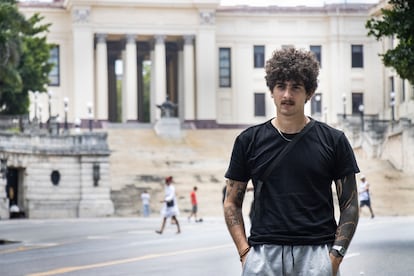
While many Cubans express a sense of hopelessness and a desire to leave the island, there are others — like Raymar Aguado — who are committed to staying.
“I really don’t want to leave Cuba,” he shrugs. “No matter how bad things get, I still believe I have some kind of political responsibility in this, to be a part of the transformation. It’s impossible for me not to feel that challenge. But imagining a future is complicated.”
Translated by Avik Jain Chatlani.
Sign up for our weekly newsletter to get more English-language news coverage from EL PAÍS USA Edition
